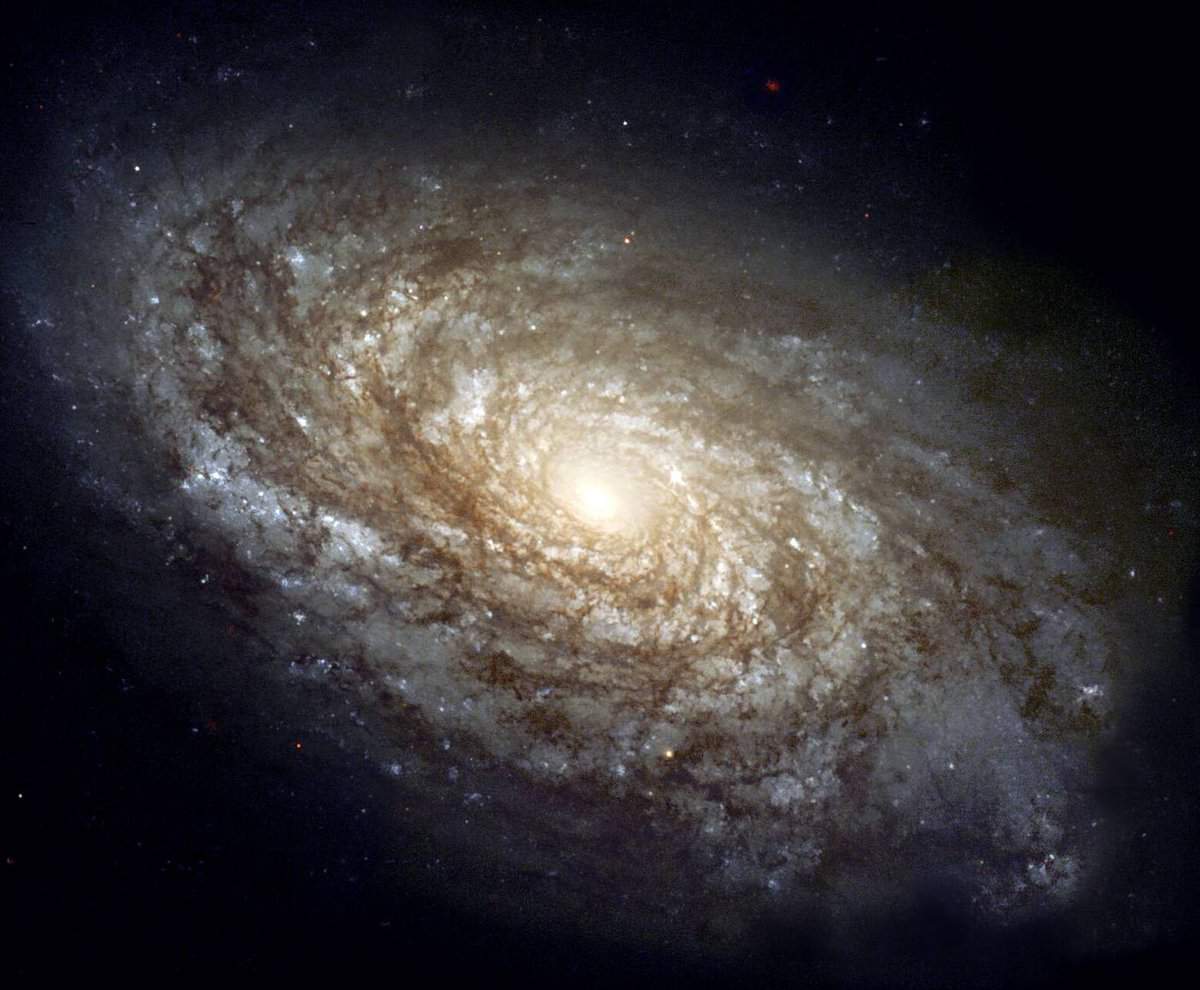A galaxy is a vast structure in the Universe that is made up of stars, star systems, individual extrasolar planets, satellites, as well as dust and gas, among other things. Currently, there are 4 main types of galaxies: spiral, elliptical, irregular, and lens-shaped.
Naturally, the diversity of galaxies is much more extensive. For instance, spiral galaxies can be further classified as either ordinary or barred. The latter are distinguished by the presence of a prominent bar in the center, consisting of young and bright stars. Our own Milky Way, for example, is a barred spiral galaxy, with a bar that extends from the center and branches out into massive arms. One of these arms is where we reside. The length of the bar can span up to 27,000 light-years.
Spiral Galaxies
Spiral galaxies are incredible formations in the cosmos, characterized by a concentration of stars. While they may not be the largest structures in the universe, their size is still astonishing. The Milky Way, for instance, extends over a distance with a diameter of 100,000 light years. Another spiral galaxy, the Andromeda Nebula, is even larger, with a diameter of 110,000 light years.
Although Andromeda and the Milky Way are similar in size, Andromeda is much more massive and can hold a trillion stars, while the Milky Way contains only two hundred to four hundred billion. It’s important to note, however, that not all galaxies are this massive. There are smaller galaxies as well, such as the Milky Way’s dwarf satellite galaxies: the Large and Small Magellanic Clouds. These galaxies have diameters of only 7,000 light years each, making them the largest examples of their category.
Elliptical Galaxies
Let’s now discuss elliptical galaxies. They have a different shape compared to spiral galaxies and lack arms. Externally, these galaxies resemble a sphere or a flattened sphere with a higher concentration of stars in the center and a lower concentration towards the edges.
Another distinction is the complete absence of bright stars, such as blue-white giants and supergiants, while other types are still common. Elliptical galaxies make up about 25% of the total, ranking second after spiral galaxies, which make up about half of the total.
Lenticular Galaxies
Lenticular galaxies are a distinct type of galaxy that shares similarities with both spiral and elliptical galaxies, yet possesses unique characteristics of its own. Unlike spiral galaxies, lenticular galaxies lack the iconic arms that spiral outwards from the central core. Instead, they feature a flat disk shape, similar to spiral galaxies, with a prominent core. These galaxies are believed to have very limited star formation, resulting in a majority of their stars being relatively old.
Irregular Galaxies
Irregular galaxies are a unique type of galaxy that defies classification based on traditional shapes. Unlike spiral or elliptical galaxies, irregular galaxies lack a distinct shape and instead have a more chaotic and uneven distribution of stars. The central part of these galaxies is also uncertain and less defined. It is speculated that irregular galaxies may have started out as spiral or elliptical galaxies in the past but lost their shape due to gravitational forces or interactions with larger neighboring galaxies.
There are three different types of irregular galaxies: the first type still retains some visible traces of its past spiral form. The second type is completely shapeless and provides no clues about its previous form. The third type is considered to be one of the oldest galaxies and studying them is crucial for understanding the formation of our universe.
Enjoyed the article? Please show your support by giving it a like. If you share my passion for space, consider subscribing to my channel and exploring my other articles and videos. If you have any agreements or disagreements, feel free to leave a comment. I appreciate your support for my growing channel.
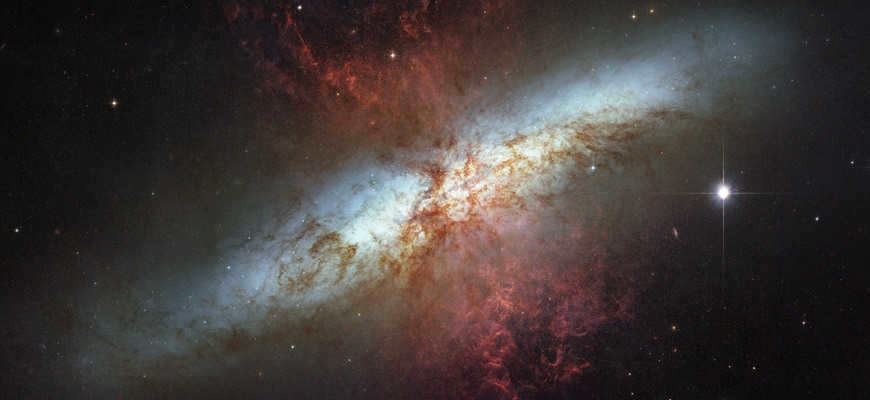
A galaxy is a fairly large collection of stars that consists of interstellar gas, dust, dark matter, and energy. These components are interconnected through the gravitational forces at play. Galactic systems can differ in their shape and size. Typically, they contain anywhere from a few million to several trillion celestial bodies. This piece will explore the primary categories of galaxies and their distinguishing characteristics.
Characteristics of Galaxies
Dark energy and matter make up about 90% of the mass in galaxies, but their exact nature is still not fully understood. However, scientists have found evidence suggesting that giant black holes dominate the central regions of galaxies, with very little visible matter present. It is estimated that there are approximately 100 billion galaxies within the observable universe.
The main types of galaxies are classified according to Edwin Hubble’s system, which he introduced in 1925. These types include:
To gain a better understanding of each type, it is worthwhile to examine their individual characteristics in more detail.
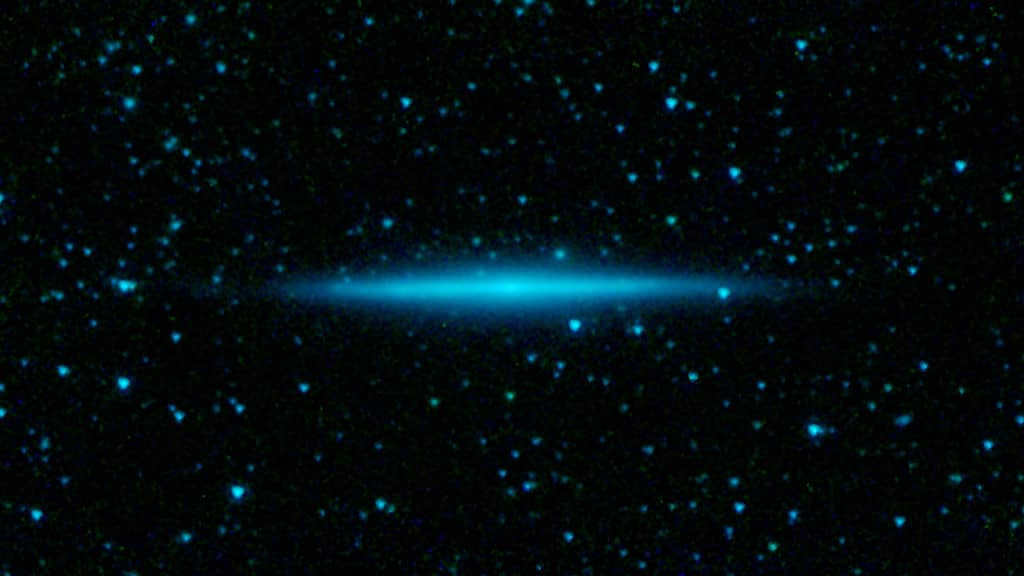
Located 100 million light years away, Galaxy UGC 10288 is an example of an elliptical galaxy. These galaxies have a distinct spherical structure and their brightness decreases towards the edges. They rotate at a very slow pace and do not contain any dusty matter. Each elliptical galaxy is unique in its external characteristics and level of compression. They make up a quarter of all known galaxies.
Spiral galaxies are called so because they have luminous arms within their disk structures. They are characterized by gradual condensation and spiral branches. These galaxies contain a large number of giant stars, which cause the glow of nebulae. Surrounding the disk is a spheroidal halo, which contains old stars from the second generation. The rotation of these galaxy groups occurs at high speeds.
Lenticular galaxies, on the other hand, are an intermediate link between elliptical and spiral galaxies. They have the main components of halos and disks, but lack spiral arms. These galaxies make up about 20% of all galaxies. The main component is a lens with a faint halo surrounding it.
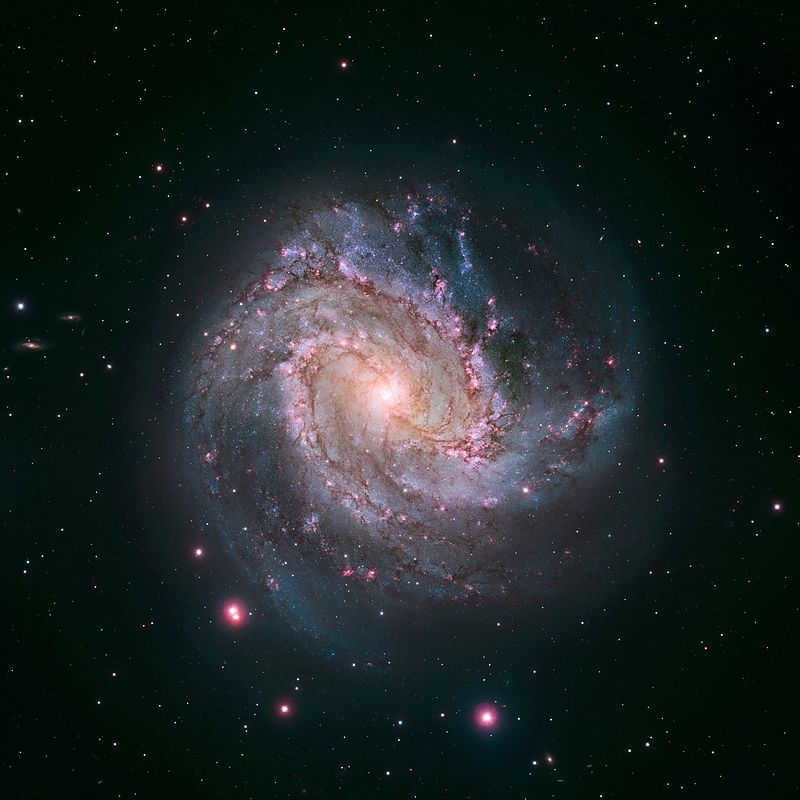
Characteristics of Evolution
No matter which types of galaxies are being considered, significant explosions associated with supernovae of luminaries produce elements with masses greater than iron. This gives rise to the formation of first and second generation stars. The elements from the first group enrich the primary gas with a proper combination of chemical elements that are heavier than helium. On the other hand, the second category of stars consists of elements that are even heavier.
The process of star formation occurs as a result of ongoing compression within the galaxy, leading to the formation of stars closer to the central region. In rotating galaxies, this formation occurs earlier during the contraction phase, before rotation has significantly affected the overall shape of the galaxy. This results in the presence of different types of galaxies, each characterized by unique features.
Galaxies in the universe consist of stars, clusters, dust, gas, dark matter, energy, and planets, all held together by gravity. Multiple interconnected systems are believed to exist within the universe, varying in shape and size. Consequently, there are various kinds and types of galaxies present.
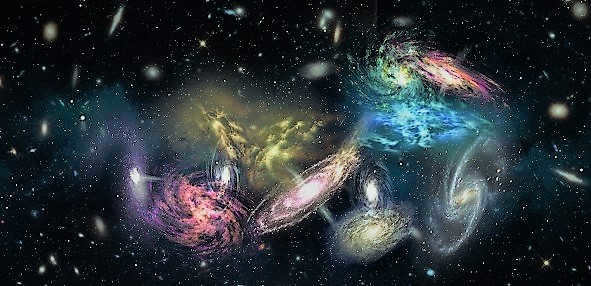
Spiral Galaxies
Spiral galaxies have a distinctive shape resembling a flat disk with a highly luminous core, known as the nucleus. Additionally, these galaxies possess spiral arms, which vary in their degree of curvature and have been classified accordingly.

A diagram illustrating the arrangement of a spiral galaxy is presented here.
All spiral galaxies are designated by the letter S.
- Sa exhibit tightly coiled arms;
- So lack arms altogether, but their nuclei are notably luminous;
- Sb possess moderately coiled arms, with minimal armature surrounding the core;
- Sc have less tightly coiled arms, not encircling the nucleus.
Mesier’s catalog can be considered widely acknowledged in the field of astronomy. Mesier meticulously studied and characterized numerous celestial entities, which he documented in a catalog.
According to Mesier’s catalog, spiral galaxies include:
Furthermore, spiral galaxies have the potential to be junctional. The distinctive aspect is that the spirals do not emanate from the nucleus, but rather from the junctions.
These particular galaxies are designated as Sb. They can further be classified as Sba, Sbb, or Sbc based on the shape and length of the lintel.
Mesier, a prominent astronomer, included the following galaxies within this group:
⦁ Mesier 58, 65, 95, and 109.
Elliptical Galaxies
Elliptical galaxies exhibit a variety of shapes, ranging from circular to oblong-oval.
What’s fascinating is that they lack a prominent nucleus, and remarkably, they possess minimal interstellar gas. Consequently, these galaxies do not experience the formation of new stars. However, they are home to a significant population of ancient red stars.
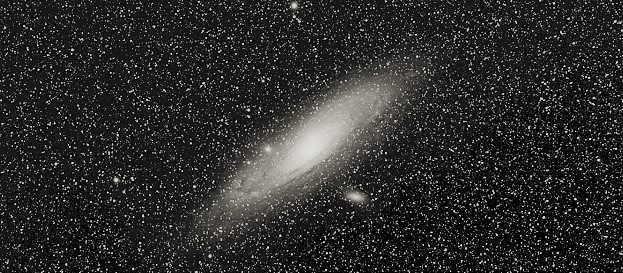
The letter E is used to designate these galaxies, and they are further classified into subspecies ranging from E0 to E7 based on their shape. E0 represents a completely round galaxy, while E7 is the most elongated shape.
According to the Mesier catalog, some examples of elliptical galaxies include Mesier 32, 49, 87, and 89.
It is important to note that elliptical galaxies are among the largest known objects in the Universe.
Lenticular galaxies, also known as intermediate galaxies, have a distinct structure that sets them apart from other types of galaxies. Unlike spiral galaxies, lenticular galaxies lack the characteristic arms but have a prominent nucleus and disk. Additionally, they contain red giant stars similar to those found in elliptical galaxies and lack interstellar gas. However, their disk shape and motion closely resemble that of spiral galaxies.
Lenticular galaxies are classified as S0, SB1, and E8.

Types of Irregular Galaxies
Irregular galaxies do not possess a specific shape. However, due to the abundance of such formations in the Universe, these galaxies have been classified into different types.
- Type I (IO) irregular galaxies are composed of unique individual components, usually consisting of young stars and nebulae.
- Type II (Im) irregular galaxies are formed through interactions between galaxies. These galaxies are frequently involved in collisions and mergers.
Messier has identified two irregular formations: galaxies Messier 85 and 86.
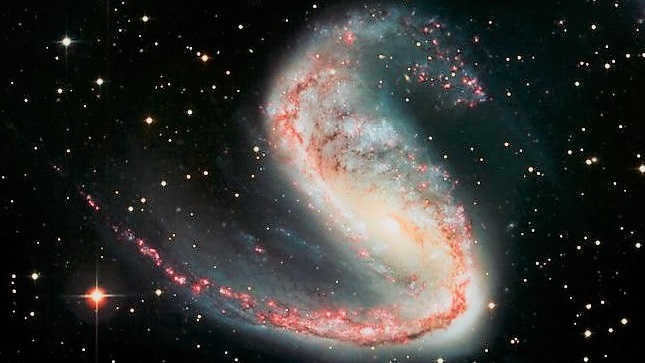
Undoubtedly, the diversity and uniqueness of galaxies are common knowledge. However, ongoing research suggests that there are still many more yet to be discovered by scientists.
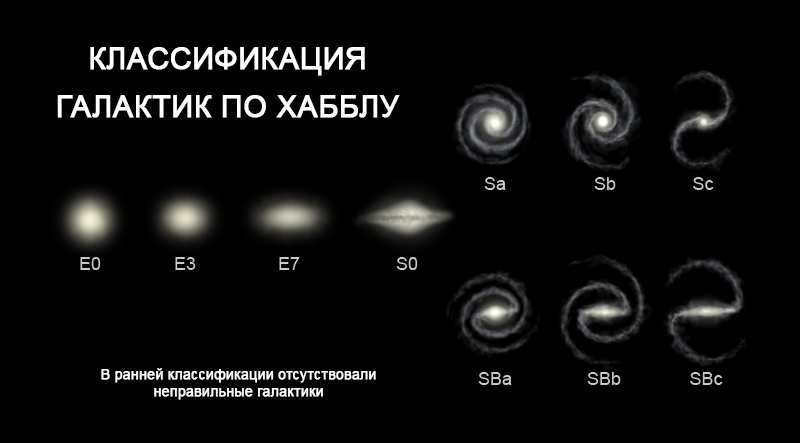
Galaxies can be categorized into three primary forms: elliptical, spiral, and irregular. These three forms are further divided and subdivided into various systems, comprising the comprehensive classification system known as the Hubble Cameron. Initially, Hubble believed that this diagram represented not only their classification but also their evolutionary sequence.
However, modern scientists adhere to the morphological classification outlined in the chart below.
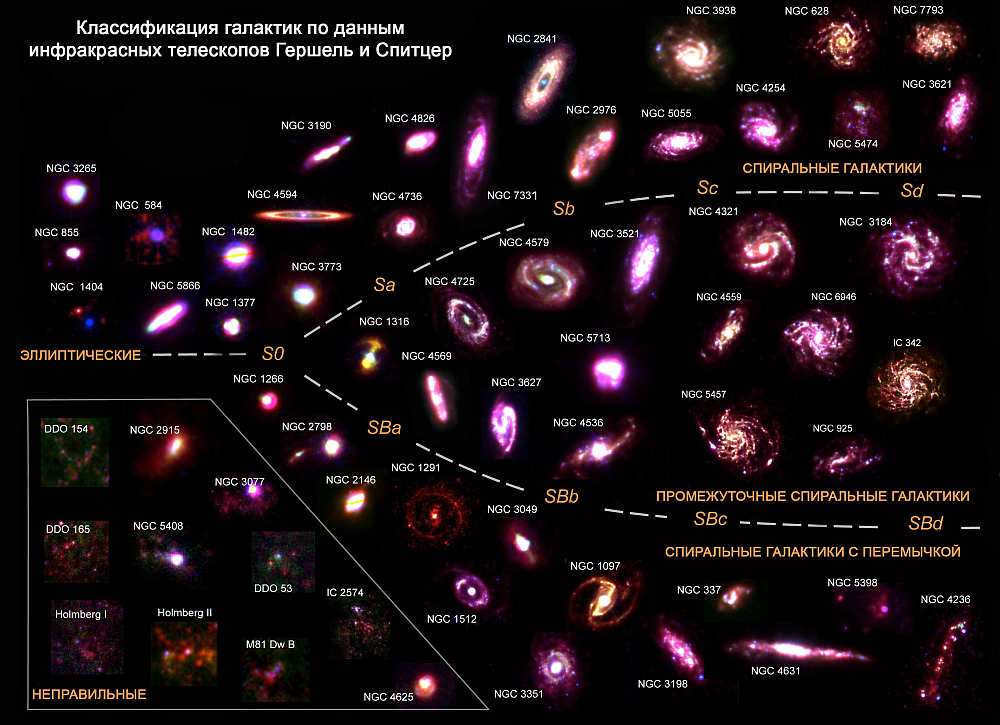
This diagram presents a collection of 61 nearby objects that were observed and documented by the Herschel and Spitzer space telescopes. These objects are situated at distances ranging from 10 to 100 million light-years away from Earth and were captured as part of various scientific investigations.
The depicted images of galaxies showcase the presence of interstellar dust, rather than stars. This dust is heated by young and hot stars, making it visible only through the use of infrared telescopes like Herschel and Spitzer.
Each individual image is displayed in a trichromatic format, highlighting the warm dust (colored blue) detected by Spitzer at a wavelength of 24 μm, as well as the cooler dust (colored green) and (colored red) captured by Herschel at wavelengths of 100 μm and 250 μm, respectively.
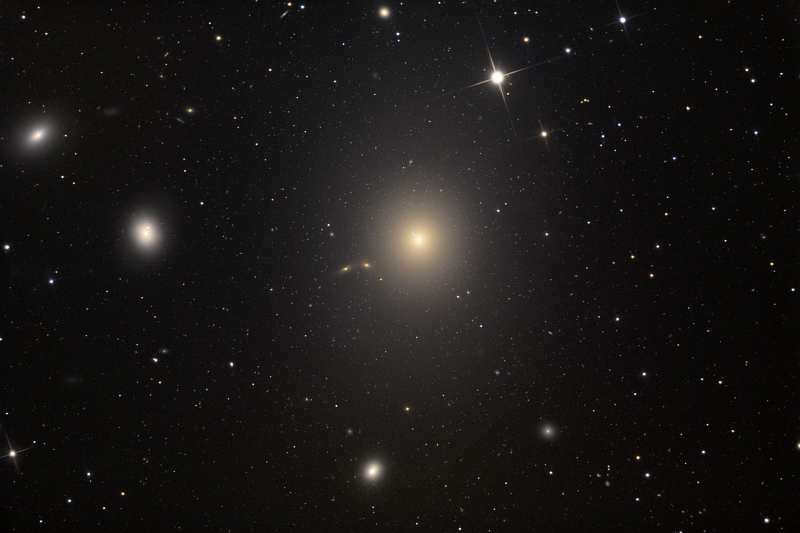
An elliptical galaxy is characterized by its spheroid or elongated sphere shape. When observed from our perspective in the sky, these celestial islands appear as ovals or disks. Additionally, the brightness of their surface diminishes towards the center. The magnitude of their elliptical shape increases as we move up the classification scale. For instance, an E0 galaxy is perfectly round, whereas an E7 galaxy is more oval in shape. The classification of elliptical galaxies spans from E0 to E7.
Spiral
The spiral is a geometric shape that starts from a central point and expands outward in a continuous curved pattern. It is commonly found in nature, such as in the shape of seashells, hurricanes, and galaxies. The spiral is also used in art and design, where it represents movement, growth, and transformation. It is a symbol of life, as it reflects the cyclical nature of existence. The spiral can be seen as a journey, with each curve representing a new phase or stage. It is a reminder to embrace change and embrace the unknown, as each twist and turn leads to new possibilities. The spiral is a powerful symbol that can inspire and challenge us to explore new horizons and discover our true potential.
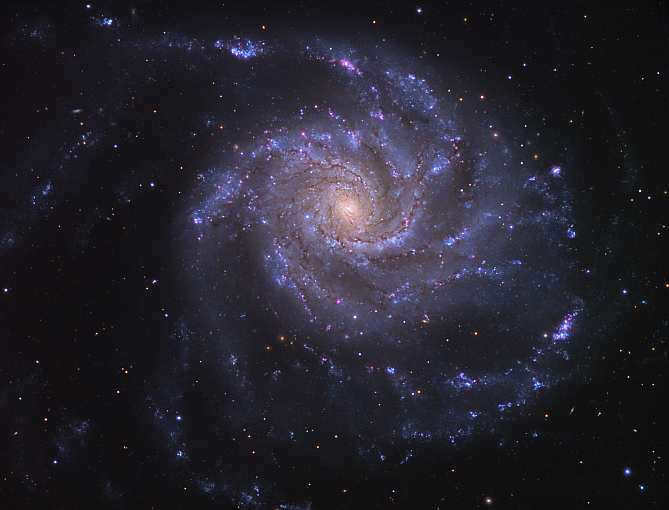
Galaxies are characterized by three primary components: a central bulge, a disk, and a halo. The central bulge, also known as the bulge, is located at the core of the galaxy and primarily consists of aging stars. The disk, on the other hand, is composed of dust, gas, and young stars. This disk structure forms a variety of patterns and shapes within the galaxy. For instance, our solar system is situated in the Orion arm of the galaxy. Surrounding the bulge is the halo, which is a loosely arranged spherical structure. Within the halo, there are clusters of old stars referred to as globular clusters.
Type S0
can be rephrased as “S Type 0” while maintaining the HTML markup.
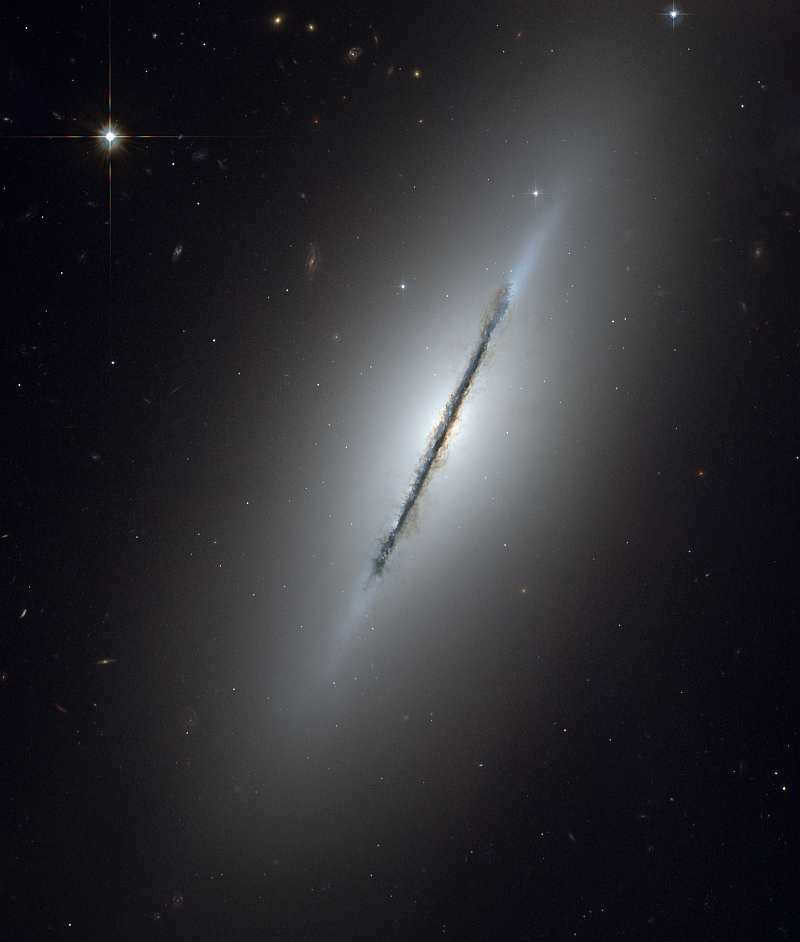
S0 galaxies are a transitional type of galaxies that fall between E7 ellipticals and Sa spiral galaxies. They possess a bulge and a thin disk, distinguishing them from ellipticals, but they lack the characteristic spiral structure of Sa galaxies. S0 galaxies are also referred to as lenticular galaxies.
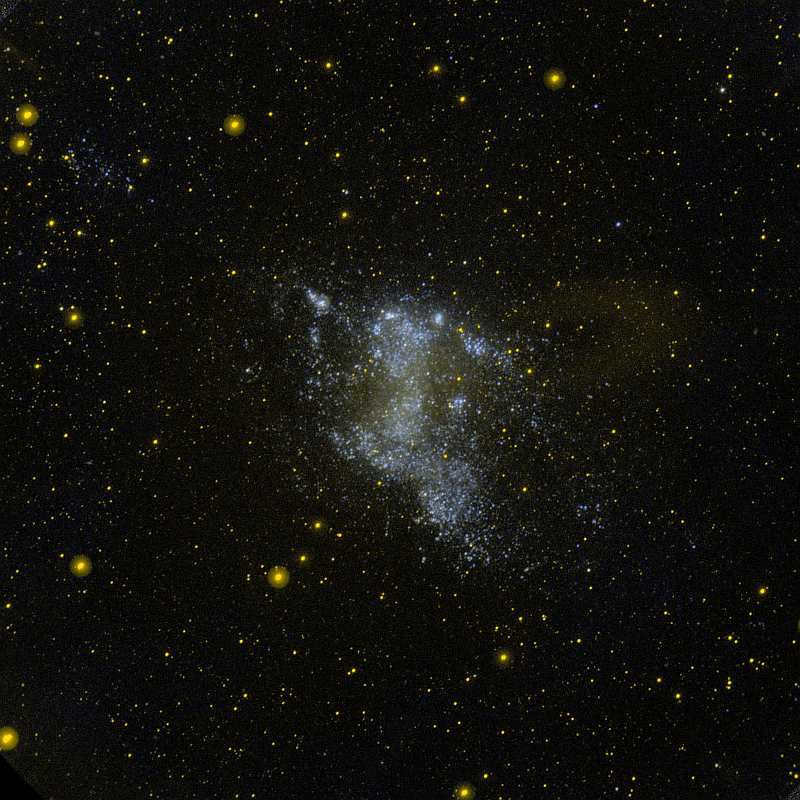
Irregular galaxies lack a consistent and symmetrical structure. They can be categorized into two groups, IrrI and IrrII. IrrI galaxies are characterized by the presence of HII regions, which are areas of ionized hydrogen. These galaxies also have a high number of young and hot stars. On the other hand, IrrII galaxies have a significant amount of dust, which obstructs the majority of starlight. Consequently, it becomes extremely challenging to observe individual stars within these galaxies. Furthermore, the shape of irregular galaxies is often entirely irregular in nature.

A galaxy is a collection of various celestial objects and substances, including gas and dust clouds, billions of stars, nebulae, planets, asteroids, comets, black holes, and even significant quantities of dark matter, all organized by the gravitational force.
Our solar system is a part of a vast spiral galaxy known as the Milky Way. This term, originating from Greek, can be interpreted as the “milky way” due to its resemblance to a faintly illuminated streak stretching across the sky.
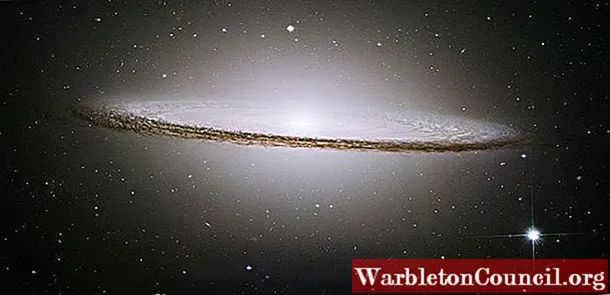
During clear summer nights, the galactic core can be easily observed in the space between the constellations Scorpius and Sagittarius. This region is known for its high star density, making it a prime location for observing galaxies.
The Discovery of Galaxies
The first person to discover galaxies was the Greek philosopher and mathematician Democritus of Abdera (460-370 BC). Despite the absence of telescopes during his time, Democritus proposed that the Milky Way is composed of countless stars that are spread apart, making it impossible to distinguish one single star. This idea was later confirmed by Galileo (1564-1642) when he used a telescope and realized that there were far more stars in the sky than he initially thought.

The concept proposed by Immanuel Kant, a German philosopher who lived from 1724 to 1804, suggests that the Milky Way consists of numerous solar systems, all of which have an elliptical shape and rotate in a rhythmic manner around a central point.
In addition, Kant also proposed the existence of other groups of stars and planets similar to the Milky Way, which he referred to as “island universes.” These island universes would appear as small, faint points of light when observed from Earth.
Twenty years later, in 1774, French astronomer Charles Messier (1730-1817) compiled the Messier catalog, which consists of 103 deep space objects that are still visible today.
Among these objects were some potential candidates for island universes, which were simply referred to as nebulae. One of these nebulae, now known as the Andromeda galaxy, was cataloged as M31.
William Herschel (1738-1822) expanded the inventory of celestial objects in deep space to 2,500 and was the first to provide a description of the shape of the Milky Way. However, at that time, scientists had not yet realized that certain nebulae, such as M31, were massive clusters of stars similar to those found in the Milky Way.
It wasn’t until 1904, when a massive telescope with exceptional resolution was constructed at the Mount Wilson Observatory in California, that the true size of the Universe became apparent. This telescope featured a mirror with a diameter of 100 inches. With this new technology, astronomers were able to comprehend that the immense Milky Way is just one of numerous galaxies in the Universe.
In 1924, Edwin Hubble (1889-1953) successfully determined the distance to one of these spiral nebulae by observing a specific type of stars known as Cepheids in the prominent spiral nebula named Andromeda, also known as M31.
At that time, Harold Shapley (1885-1972) had made an estimation of the magnitude of the Milky Way, but it was of such immense proportions that he was certain the Andromeda Nebula was contained within it.
However, Hubble concluded that the distance to the Andromeda Cepheids was significantly greater than the size of the Milky Way, thus ruling out its presence within it. Andromeda, much like the Milky Way, was its own separate galaxy, although for a considerable period it was mistakenly referred to as an “extragalactic nebula”.
Distinctive Features of Galaxies
Galaxies possess a particular structure and can be categorized based on this characteristic. Additionally, they have mass and are not stationary entities as they exhibit motion.
Among the various types of galaxies, there are immense and incredibly luminous ones such as the Milky Way and Andromeda. On the other end of the scale, there are galaxies known as “dwarfs” which are a thousand times less bright. To grasp the concept of size, it is helpful to be aware of some of the units of measurement employed in astronomy. Firstly, we have the light year.
A light-year serves as a unit of measurement for distance, specifically the distance light travels within one year. Taking into account that the speed of light is 300,000 km/s and multiplying it by the number of seconds in 365 days, the outcome amounts to approximately 9.5 billion kilometers.
When comparing distances in space, it is interesting to note that the distance from the Sun to Earth is equivalent to 8.5 light minutes or approximately 150 million kilometers. This distance is often referred to as one astronomical unit, which is commonly used in measurements within the solar system. To put this into perspective, the next closest star to the Sun is Proxima Centauri, which is located 4.2 light-years away.
Another commonly used unit of measurement in astronomy is the parsec, which stands for parallax in angular second. A parsec is defined as the distance at which the parallax between the Earth and the Sun is equal to 1 angular second. The following diagram provides a visual representation of this concept:

Dimensions, Movement, and Chemical Composition
The dimensions of galaxies vary greatly, ranging from galaxies so small that they contain only a few thousand stars to massive elliptical galaxies, which will be discussed in detail later.
For instance, our Milky Way has a diameter of approximately 100,000 light years and is considered a large galaxy, although not the largest. NGC 6872, on the other hand, boasts a diameter of 520,000 light years, which is about five times the size of the Milky Way, making it the largest known spiral galaxy to date.
Galaxies are not stationary. Stars, gas, and dust clouds typically revolve around a central point, but different parts of a galaxy rotate at different speeds. The stars in the center rotate more rapidly than those on the outskirts, a phenomenon known as differential rotation.
When it comes to the chemical makeup, hydrogen and helium are the most prevalent elements in the universe. Within stars, which can be likened to nuclear fusion reactors, the heaviest elements known to us are produced through the periodic table.
The color and brightness of galaxies undergo changes over time. Younger galaxies are both bluer and more luminous in comparison to older galaxies.
Galaxies that have an elliptical shape tend to appear red, as they are comprised of numerous older stars. On the other hand, irregular galaxies are the bluest in color. As for spiral-shaped galaxies, blue hues are concentrated towards the center while red hues are more prominent towards the outer regions.
Galaxy Components
When observing a galaxy, various structures can be identified, similar to those found in the Milky Way, which serves as a model due to its extensive research.
Disks and Halos
The two primary structures in our galaxy are the disk and the halo. The disk is located in the midplane of the galaxy and contains a significant amount of interstellar gas, which leads to the formation of new stars. It also includes both old stars and scattered clusters, which form a loosely organized group of stars.
It is important to note that not all galaxies have the same rate of star formation. Spiral galaxies, for example, are believed to have a much higher rate compared to elliptical galaxies.
The galaxy is enveloped by a halo, which is a less dense spheroidal region due to the scarcity of dust and gas. Within this halo, there are globular clusters, which are clusters of stars held together by gravity and are much older than the main disk of the galaxy. Additionally, individual stars and dark matter can also be found within the halo.
Dark matter is a type of matter that remains mysterious in terms of its nature. It earned its name because it does not emit electromagnetic radiation, and its existence has been proposed to explain the unexpected high velocities at which stars move in the galaxy.
The velocity at which a star moves in relation to the galactic center is determined by the distribution of matter, as it is the gravitational attraction that keeps the star in its orbit. A higher velocity suggests the presence of unseen matter, which is referred to as dark matter.
Flask, the core of a galaxy and a stick
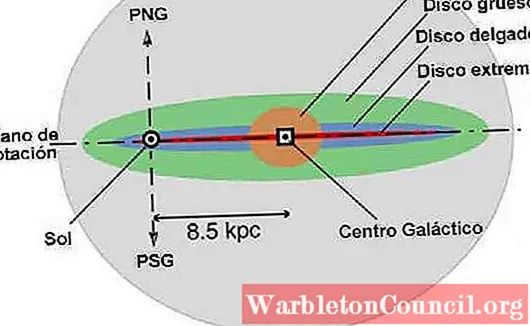
Aside from the disk and halo, a galaxy possesses a bulge known as the galactic nucleus, which is concentrated with a higher number of stars, resulting in their heightened luminosity.
While its shape is roughly spherical, the Milky Way appears more akin to a peanut, and at its core lies a nucleus that consists of a black hole – a characteristic that appears to be prevalent in many galaxies, particularly spiral ones.
Objects in close proximity to the nucleus rotate at a considerably faster pace compared to those situated further away. Their velocity is directly proportional to the distance from the center.
Some spiral galaxies, like our own, feature a bar structure that extends through the center and serves as the origin of the spiral arms. Spiral galaxies with a bar structure are more common than those without.
The nuclei are believed to facilitate the transfer of matter from the extremities to the bulb, resulting in its thickening and fostering the formation of stars in the nucleus.
Types of galaxies
When observing galaxies through a telescope, the first aspect to consider is their morphology. For instance, the vast Andromeda galaxy has a spiral shape, whereas its companion galaxy NGC 147 is elliptical.
The classification scheme for galaxies is based on their morphology, and presently the most widely used is the Hubble Chamberlain or Hubble Sequence devised in 1926 by Edwin Hubble and subsequently refined by himself and other astronomers as new data emerged.
Hubble created the diagram with the understanding that it portrayed a form of galaxy evolution, however, it has since been revealed that this isn’t accurate. The letters assigned to galaxies in the sequence are E for elliptical galaxies, S for spiral galaxies, and Irr for irregularly shaped galaxies.
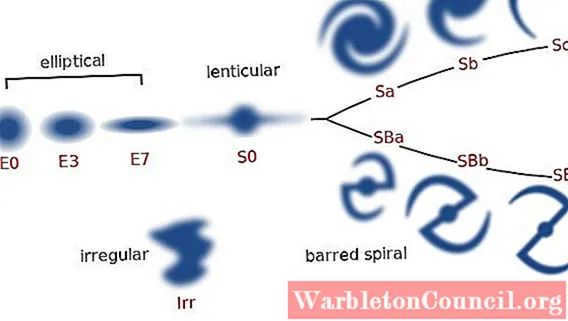
Elliptical galaxies
The elliptical galaxies, designated as E, are displayed on the left side, on the handle of the fingerboard. The stars that make up these galaxies are distributed more or less evenly.
The number accompanying the letter indicates the level of ellipticity of the galaxy, ranging from E0, which is the most spherical, to E7, which is the most flattened. Galaxies with an ellipticity greater than 7 are denoted by this parameter:
Using α and β as the apparent major and minor semi-axes of the ellipse, respectively. However, this information is relative as it is based on our observation from Earth. For instance, we cannot determine whether the galaxy shown at the edge is elliptical, lenticular, or spiral.
Giant elliptical galaxies are among the biggest entities in the cosmos. They are the most straightforward to study, even though there exist much larger variations known as dwarf elliptical galaxies.
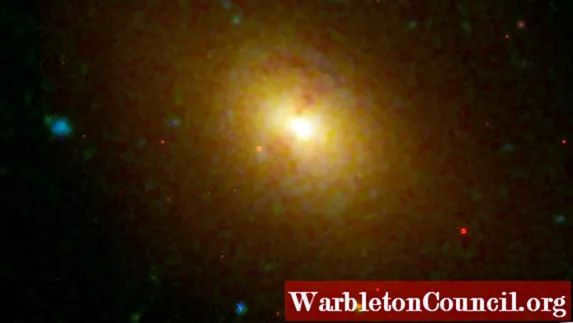
Differences between Lenticular and Spiral Galaxies
Lenticular galaxies are shaped like disks and do not have spiral arms, although they may have a central junction. They are classified as S0 or SB0 and are located at the point where the figure forks. Lenticular galaxies can be further subdivided into S01, SB01 to S03, and SB03 depending on the amount of dust present in their disks.
Spiral galaxies, on the other hand, are characterized by their spiral arms. Regular spiral galaxies are denoted as S galaxies, while spiral galaxies with a central bulge that appears to protrude from the spiral arms are denoted as SB galaxies. The majority of galaxies fall into this category.
These two classes of galaxies also differ in the brightness of their spiral arms, which is indicated by lowercase letters. This brightness is determined by comparing the size of the largest bulge to the length of the disk, expressed as L bulge / L disk.
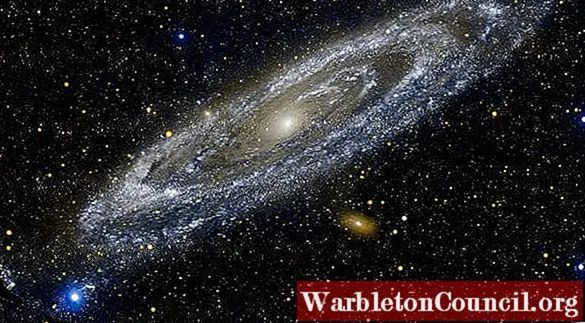
For instance, when the value of this partial is approximately 0.3, galaxies are categorized as Sa if they have a simple spiral structure, or SBa if they have a closed spiral structure. In these cases, the spirals appear more tightly wound and the density of stars in the arms is lower.
As we move further along the sequence to the right, the spirals become looser. The ratio of bulge to disk in these galaxies is approximately L bulge/L disk ≈ 0.05.
If a galaxy possesses intermediate characteristics, up to two lowercase letters can be added. For example, some classify the Milky Way as SBbc.
Unconventional galaxies
These galaxies have a shape that does not conform to any of the previously described patterns.
Hubble himself divided them into two categories: Irr I and Irr II. The former are slightly more organized than the latter, as they resemble the spiral arms in some way.
Irr II galaxies, on the other hand, are shapeless and lack any identifiable internal structure. Both Irr I and Irr II galaxies are generally smaller than elliptical galaxies or grand spiral galaxies. Some authors prefer to refer to them as dwarf galaxies. Among the most famous unconventional galaxies are the nearby Magellanic Clouds, classified as Irr I.

Following the publication of the Hubble sequence, Gerard de Vaucouleur, a French astronomer (1918-1995), proposed that the designations Irr I and Irr II be eliminated and that Irr I, which exhibit multiple spiral arms, be referred to as Sd – SBd, Sm – SBm, or Im galaxies (with “m” representing Magellanic galaxy).
Moreover, galaxies that possess a truly irregular shape without any discernible spiral structure are simply classified as Go. With that being said, the contemporary classification remains as follows:
EO, El , . . . . , E7, SOl, S02, S03, Sa, SBa, Sab, SBab, Sb, SB, SB, Sbc, SBc, Sc, SBc, Scd, SBcd, Sd, SBd, Sm, SBm, Im, Ir.
What is the process behind galaxy formation?
The origin of galaxies is a highly debated topic in the field of cosmology. Scientists theorize that in the early stages of the universe, it was predominantly dark, filled with gas clouds and dark matter. This hypothesis is based on the idea that the first stars emerged several hundred million years post the occurrence of the Big Bang.
Once the process of star formation initiates, it experiences fluctuations in its pace. As galaxies are composed of stars, various mechanisms come into play, resulting in the formation of galaxies.
The primary driving force behind the formation of cosmic entities is gravitational attraction. A small cluster of matter initially attracts more matter, leading to its accumulation.
The formation of the Milky Way is believed to have begun in a similar fashion: small groups of matter that eventually coalesced into globular clusters of halos, which contain some of the oldest stars in our galaxy.
Rotation plays a crucial role in the accumulation of mass following the initial phase of star formation. This rotational motion generates a momentum that is conserved, leading to the collapse of the spherical mass and the formation of a flat disk.
Galaxies have the ability to increase in size through the process of merging with smaller galaxies. This is currently happening with the Milky Way and its smaller companions, the Magellanic Clouds.
In the distant future, another notable merger is expected to take place between the Milky Way and the Andromeda galaxy. Unlike most galaxies, Andromeda is actually moving towards us and is currently located 2.2 million light years away.
What is the count of galaxies present in the universe?
While the majority of space is vacant, there are countless galaxies, with some estimates suggesting possibly 100 trillion of them. Others estimate that there are 2 trillion galaxies. A significant portion of the universe remains unexplored, leaving this question without a definitive answer.
In a mere 12 days, the Hubble Space Telescope identified 10,000 galaxies of various shapes. The precise number of galaxies existing in the universe remains unknown. It is crucial to note that when observing through a telescope, you are not just venturing into greater distances, but also into the past.
The sunlight we observe has taken approximately 8.5 minutes to reach our planet. The image of Andromeda, which we perceive through binoculars, is actually from 2.2 million years ago. This is the reason why the things we see from Earth fall within the scope of the observable universe. Presently, there is no method to visually explore what lies beyond this boundary.
One technique to estimate the number of galaxies in the observable universe involves capturing images from the Hubble Space Telescope’s extremely wide field of view, known as the XDF, which represents a small portion of the celestial sphere.
One particular image from the XDF unveiled 5,500 galaxies situated 13.2 billion light-years away. By multiplying this figure by the number of XDFs covering the entire celestial sphere, scientists have estimated the existence of approximately 100 billion galaxies.
All signs indicate that there were more galaxies in the past compared to the present, although these earlier galaxies were smaller, had a blue hue, and possessed more irregular shapes in contrast to the graceful spiral galaxies we observe today.
Unique Examples of Galaxies
Contrary to their immense magnitude, galaxies do not exist in isolation, but rather form part of hierarchical formations.
Our very own Milky Way is a member of the renowned Local Group, which consists of approximately 54 galaxies that are no more than 1 megaparsec away from each other. As one moves further away, the density of galaxies gradually decreases until another cluster, similar to the Local Group, emerges.
Among the vast array of discovered galaxies, there are a few remarkable instances that deserve special attention due to their exceptional characteristics:
Gigantic elliptical galaxies
The center of galaxy clusters is home to the most enormous galaxies in existence. These colossal elliptical galaxies possess such immense gravitational pull that they draw in other galaxies, absorbing them. Due to their extremely low rates of star formation, they rely on assimilating other galaxies in order to continue expanding.
Dynamic galaxies
Dynamic galaxies, unlike more ordinary and calm galaxies like the Milky Way, emit extremely high-frequency energy waves, much higher than those emitted by the cores of stars that are typical to any galaxy.
These intense energy waves, which possess the power of billions of suns, originate from the cores of celestial objects such as quasars that were first detected in 1963. Remarkably, a quasar, one of the most brilliant entities in the entire Universe, can sustain this level of activity for millions of years.
Seyfert galaxies serve as another illustration of dynamic galaxies. Several hundred of them have been identified up to this point. Their central regions emit highly ionized and fluctuating radiation.
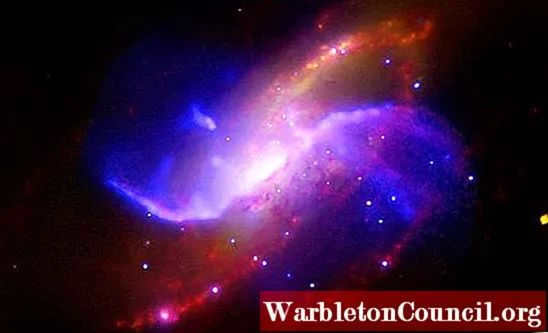
There is a belief that in the vicinity of the central region, vast quantities of gaseous substance are being drawn towards the central black hole. The release of mass results in the emission of radiant energy in the X-ray spectrum.
Radio galaxies are elliptical galaxies that emit significantly higher levels of radio frequencies, approximately ten thousand times more than regular galaxies. These galaxies possess sources – radio lobes connected to the galactic nucleus by filaments of matter – that generate electrons in the presence of a powerful magnetic field.
References
- B. Carroll. Introduction to modern astrophysics. 2nd Edition. Pearson. 874-1037.
- Galaxy. Retrieved from: es.wikipedia.org
- How it works. 2016. The book of space. 8th Edition. Edited by Imagine Publishing Ltd. 134-150.
- Galaxies. Retrieved from: astrofisica.cl/astronomiaparatodos.
- L. Oster. 1984. Modern astronomy. From the editors of Reverté. 315-394.
- J. Pasachoff. 1992. Stars and planets. Peterson Field Guides. 148-154.
- Quora. How many galaxies are there? Retrieved from: es.quora.com.
- A ruler to measure the universe. Retrieved from: henrietta.iaa.es
- What is a galaxy? Retrieved from: spaceplace.nasa.gov.
This article provides an explanation of galaxies, including their formation, composition, and estimated number within the observable universe.
The Ancient Era
Since ancient times, humans have been captivated by the celestial sky. Struggling to comprehend the nature of stars and the moon, individuals often attributed mystical or divine significance to these celestial bodies, even worshipping our satellite. As astronomy advanced as a scientific discipline and primitive telescopes were developed, it became evident that our planet is not the sole planet in existence and that it orbits the Sun along with others.
Over time, as observational tools advanced and the field of astronomy progressed, scientists came to realize that stars are, in fact, similar to our own sun and likely have their own planetary systems orbiting around them. Unfortunately, the vast distances make it currently impossible to confirm this theory through direct observation. However, the formation of both planetary clusters and star systems contributes to the creation of galaxies. So, what exactly are galaxies? What components do they consist of, and how many of them exist? These are the questions we will delve into.
Explanation
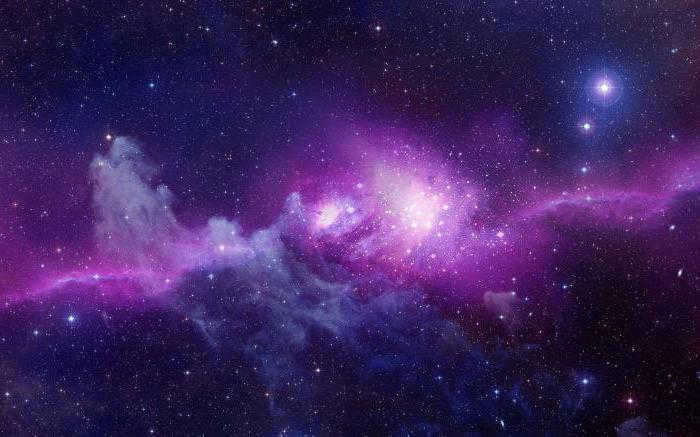
Firstly, it is important to recall the overall structure of our universe. The universe consists of various celestial bodies such as planets, satellites, asteroids, comets, and anything else that exists in space and was not created by humans. These celestial bodies are influenced by the gravitational force of larger objects, causing them to orbit around them in specific paths. For instance, the Moon revolves around the Earth due to the Earth’s gravitational pull. These celestial bodies, in turn, orbit around even more massive objects, such as the Sun. This arrangement is known as a star system. Now, let’s delve into the concept of galaxies.
A galaxy is a collection of stars and star systems that orbit a shared center of mass. In essence, it is a vast assemblage of planetary systems, stars, dark matter, interstellar gas, meteoroids, dwarf planets, and asteroids that have congregated due to the force of mutual gravity and rotate around a central point. Therefore, we have elucidated the concept of a galaxy, and its meaning is now apparent. However, the question remains: how many galaxies exist, and what variations do they exhibit?
The Milky Way Galaxy
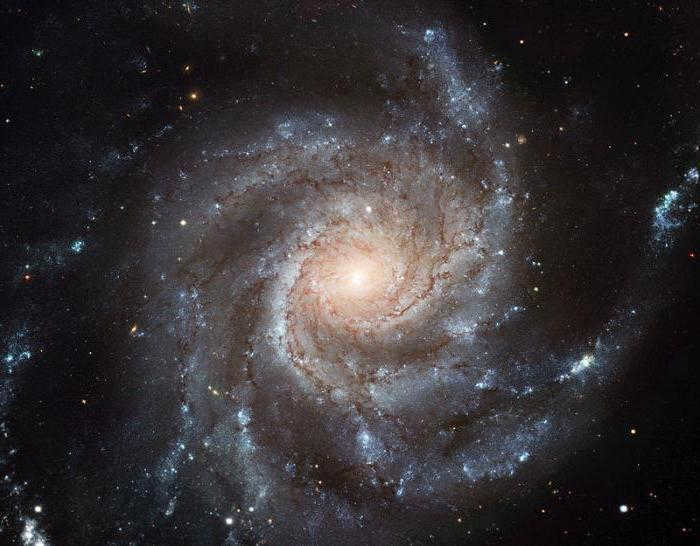
The Milky Way is the name given to our galaxy, which is home to Earth, the Sun, and other celestial bodies.
Until the late 20th century, technology did not allow us to see individual stars in other galaxies. Telescopes lacked the necessary resolution, and digital image processing methods were far from perfect. However, everything changed by the 1990s when scientists were able to observe more than 30 star clusters, where individual stars could be distinguished.
Shapes
The shapes of galaxies also vary. There are different types such as elliptical, spiral disk, lenticular, dwarf, and irregular. For instance, our own galaxy is classified as a spiral galaxy, with distinct arms. Unfortunately, scientists have made limited progress in studying other galaxies, including our own. The main obstacles are the vast distances and clusters of interstellar dust that obstruct light. This dust is responsible for concealing most of the stars, without which the night sky would not be much different from the day.
The amount of
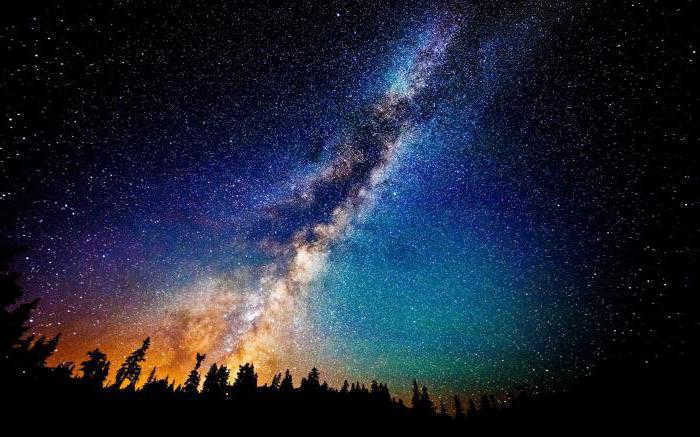
When discussing galaxies with children, they often ask about the number of galaxies. Answering this question in a way that satisfies their curiosity is challenging. While we can provide a specific number, it would not be accurate. The Universe is infinite and constantly expanding, with new stars and planetary systems forming in various locations. Its boundaries are impossible to determine, making the number of galaxies incalculable.
As mentioned previously, due to dust, we can only observe a small portion of the Universe. The approximate number of galaxies within this observable portion is over 100 billion. Unfortunately, even the closest galaxies are currently beyond our reach.
Movement
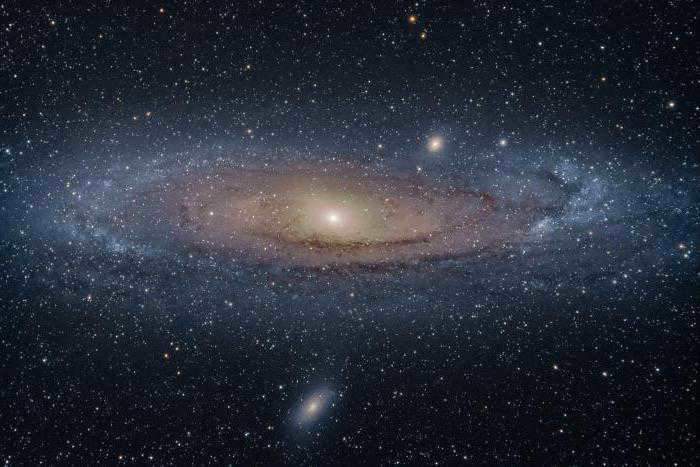
It may seem strange, but not only do planets orbit stars, and satellites with comets and meteorites move, but galaxies also have their own movement. This movement is not as easily noticeable as the Earth orbiting the Sun. The speed at which galaxies move depends on factors such as their mass, density of interstellar gas, and other variables.
So now we have a clear understanding of what a galaxy is and how many galaxies exist. Currently, the primary method of studying galaxies involves observing them using terrestrial or orbital telescopes. These telescopes allow us to observe galaxies across different parts of the electromagnetic spectrum, including visible light, infrared, and X-ray. One of the most well-known telescopes used for this purpose is the Hubble Space Telescope, which was launched into Earth’s orbit in 1990.
Therefore, we have finally gained a comprehensive understanding of galaxies and their characteristics.
"…There are endless opportunities for observation: fire, water, and the vast starry sky." This timeless declaration falls into the realm of axioms and needs no further substantiation. However, while water and fire elicit various emotions in individuals under different circumstances, the sight of the expansive celestial canopy evokes a universal response – awe, tranquility, and a realization of the insignificance of our troubles compared to the shimmering expanse that stretches above us."
Thanks to the education we receive in school, we come to understand that above us there are individual stars like our Sun, entire star systems, our Galaxy, and the Universe. However, despite the relatively high level of education in modern society, many individuals do not fully comprehend the distinction between a galaxy and the universe. Let’s attempt to address this question, as it is not particularly challenging.
The Milky Way, our dazzling abode
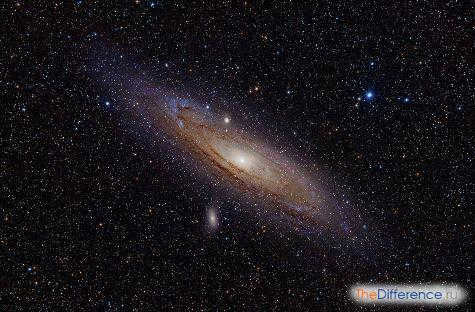
Galaxies are clusters of stellar systems that are held together by the force of gravity. This basic definition accurately captures the essence of galaxies. They can vary in size, with some being relatively small and composed of a few billion stars, while others are massive, containing trillions of stars.
One example of a smaller galaxy is the Small Magellanic Cloud, which consists of approximately 1.5 billion stars. On the other end of the spectrum is the enormous spiral galaxy known as NGC 6872, which is so large that it is difficult to determine the exact number of stars it contains. However, it is undeniable that the count is in the trillions.
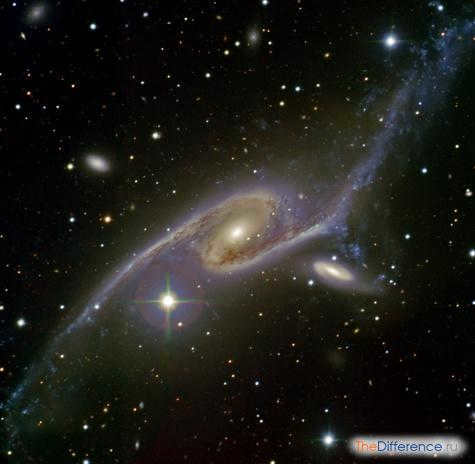
To have a clearer visualization of the enormity of this monstrosity, we can draw a comparison to our vast cosmic abode – the Milky Way (within which resides our Solar System):
- The Milky Way measures around 100-120 thousand light years in diameter and is also regarded as a substantial entity;
- Traversing the same path, the NGC 6872 galaxy would necessitate a journey of no less than 500 thousand light-years.
Incidentally, many galaxies are interconnected by the force of gravity and coexist (revolve) in unison. Within our galaxy cluster, in addition to us, exist the Andromeda galaxy (with a diameter of 200 thousand light years), the Triangle galaxies (spanning 50 thousand light years), and a number of smaller formations known as dwarf galaxies.
So, now that we have delved a bit into galaxies, let us proceed to comprehend the disparity between galaxies and the universe by discussing the universe itself.
The Cosmos… The Incomprehensible Abyss
In brief: the cosmos is an infinite expanse of space teeming with celestial bodies, stellar systems, galaxies, enigmatic black holes, vast emptiness, and more. Moreover, it is highly probable that there exist numerous other entities and phenomena within it, of which contemporary scientific knowledge remains oblivious. This vast array of diversity is in perpetual motion, living out its own enigmatic existence, occasionally beyond our comprehension.
When gazing up at the celestial expanse at night, one cannot help but be captivated by the sheer multitude of stars that adorn the sky. This visual spectacle is further reinforced by the awe-inspiring imagery captured by the Hubble telescope, the most powerful optical instrument known to mankind. In fact, recent astronomical research suggests that the universe is home to a staggering number of galaxies, ranging from a minimum estimate of 100-200 billion to potentially surpassing 500 billion. However, despite this seemingly abundant presence of star clusters, each one exists in profound solitude within the unfathomable vastness of the cosmos. The distances that separate them are so immense that the human mind can scarcely conceive of their magnitude.
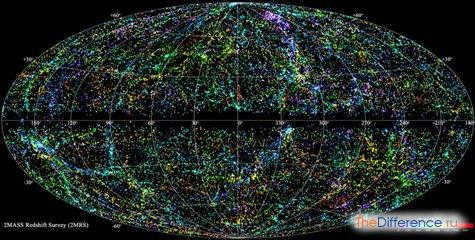
The cosmos came into existence following the occurrence of the Big Bang and, correspondingly, possesses its own age, albeit lacking any definitive boundaries. According to the most recent findings, the age of the progenitor of all things in the universe is estimated to be 13.75±0.13 billion years. It is worth noting that numerous reputable scientists subscribe to the belief that the Universe is eternal, having always existed, with no Big Bang event occurring. Nevertheless, let us defer scientific debates to the realm of “experts” and proceed to the central focus of our article.

